In 2021, whilst walking through the valley at Nanjulian in the far west of Cornwall, thanks to a favourable and fortunate angle of the late summer sunlight, I spotted some interesting markings on a large earth-fast boulder. I was fairly sure straight away that these were prehistoric cup-marks, but reserved judgement until I could return to record them.
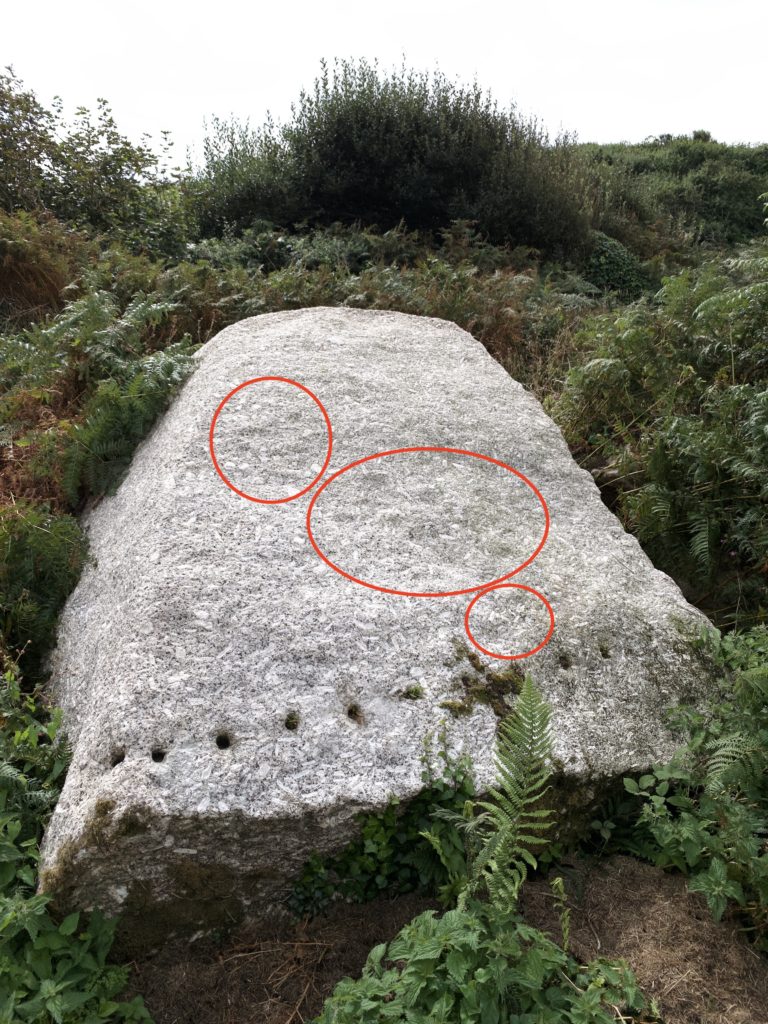
I returned in 2022 with fellow archaeologist and conservator Laura Ratcliffe-Warren from Penwith Landscape Partnership to record the stone using photogrammetry. Laura agreed with my assessment that the stone was covered in very eroded cup marks. During the site visit, Laura also spotted some potential linear features on the stone.
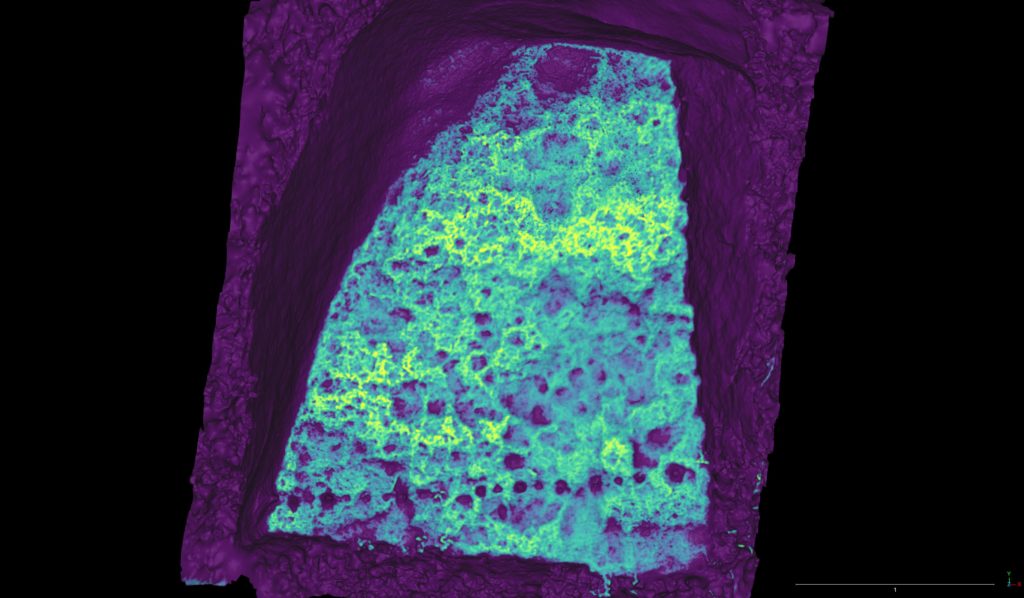
The photogrammetry was not completely conclusive in that we haven’t been able to identify every potential cup mark as they are very shallow and sit on a highly eroded and smoothed granite surface that is far from flat. However, I have produced some images that help to provide an approximate count (about 50).
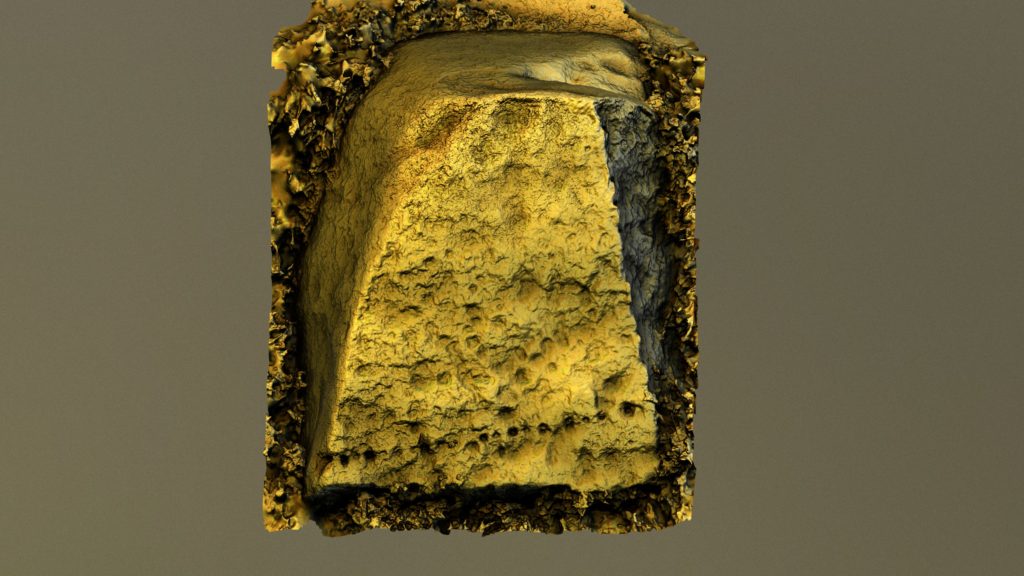
Using the Procreate painting app on an iPad Pro with an Apple Pencil stylus, I was able to draw directly onto the 3D model. The resulting sketch (it is a very long way from publication standard!) shows my interpretation of the cup marks and linear marks on the stone. This is a powerful and novel way to interpret rock art as the 3D data can be freely rotated and the lighting angle and intensity adjusted in realtime.
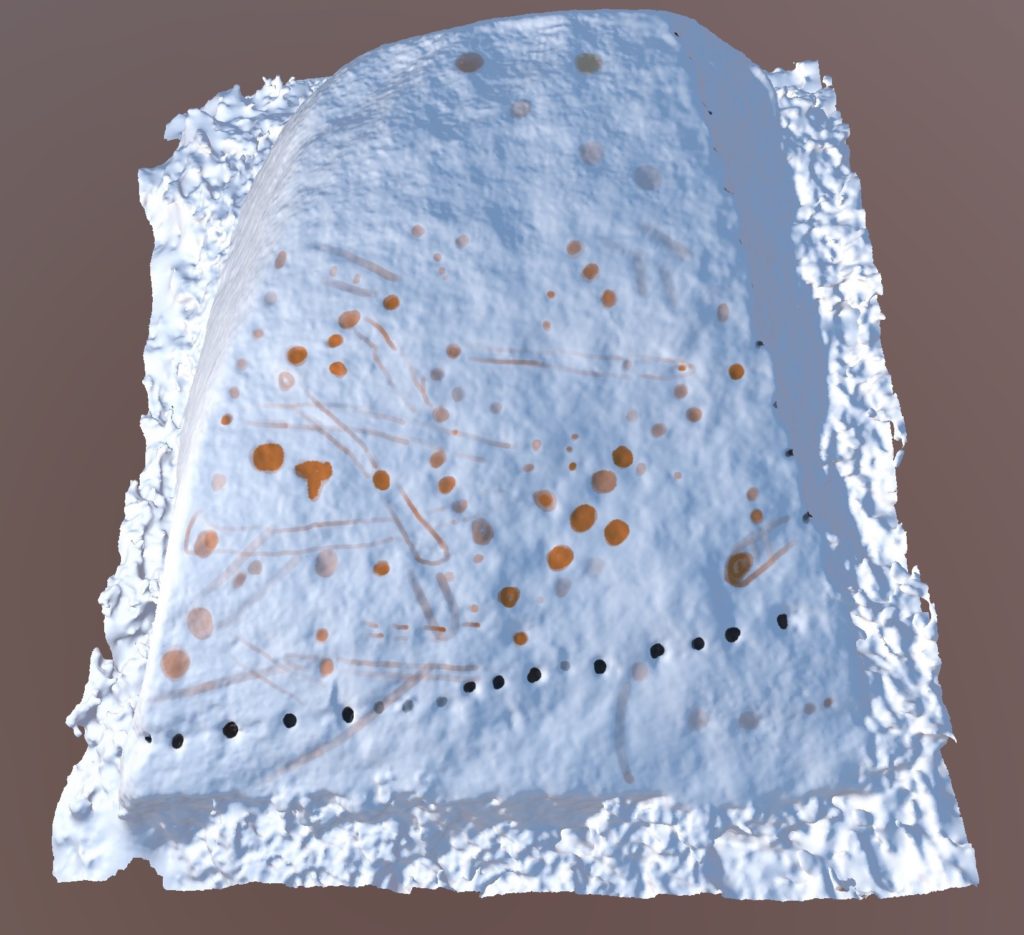
The initial findings have now been submitted to the Cornwall Historic Environment Record (HER). The 3D model of the cup marked stone is also available on Sketchfab.
It is likely that there is a lot more rock art to discover in Cornwall. A small project through the last phase of Penwith Landscape Partnership (PLP) has seen volunteers find some new individual cup marked stones, and potentially some linear features. Alongside the PLP volunteers I have also found another single feature cup marked stone which I will mention in a future blog post. Aside from archaeologists in Cornwall, its rock art is largely ignored in the field of rock art studies. It is largely unknown by most people living here. I would like to see that change.
Here is the summary sent to the Cornwall HER:
At the fork of the track leading to Nanjulian Mill is a large earthfast granite boulder (3.5m x 2.6m x 1.5m) with a north-facing sloping face. The most northerly (lower) edge of the rock has been broken off presumably to use as a lintel and a row of drill holes suggest an unsuccessful attempt to break off a second piece. A large section of the boulder has been broken off on its western side.
The relatively flat north face contains many cup marks and potentially some linear features related to them. The cup marks are shallow and eroded, but once pointed out can easily be identified. The largest, at the lower centre of the sloped surface, are approximately 11cm in diameter.
Further reading on rock art in Cornwall
Jones, A.M., & Kirkham, G. 2013. From Landscape to Portable Art: The Changing Settings of Simple Rock Art in South-West Britain and its Wider Context. European Journal of Archaeology 16(4): p.636–659.
Jones, A.M., & Goskar, T. 2017. Hendraburnick ‘Quoit’: recording and dating rock art in the west of Britain. Time and Mind 10(3): p.277–292.

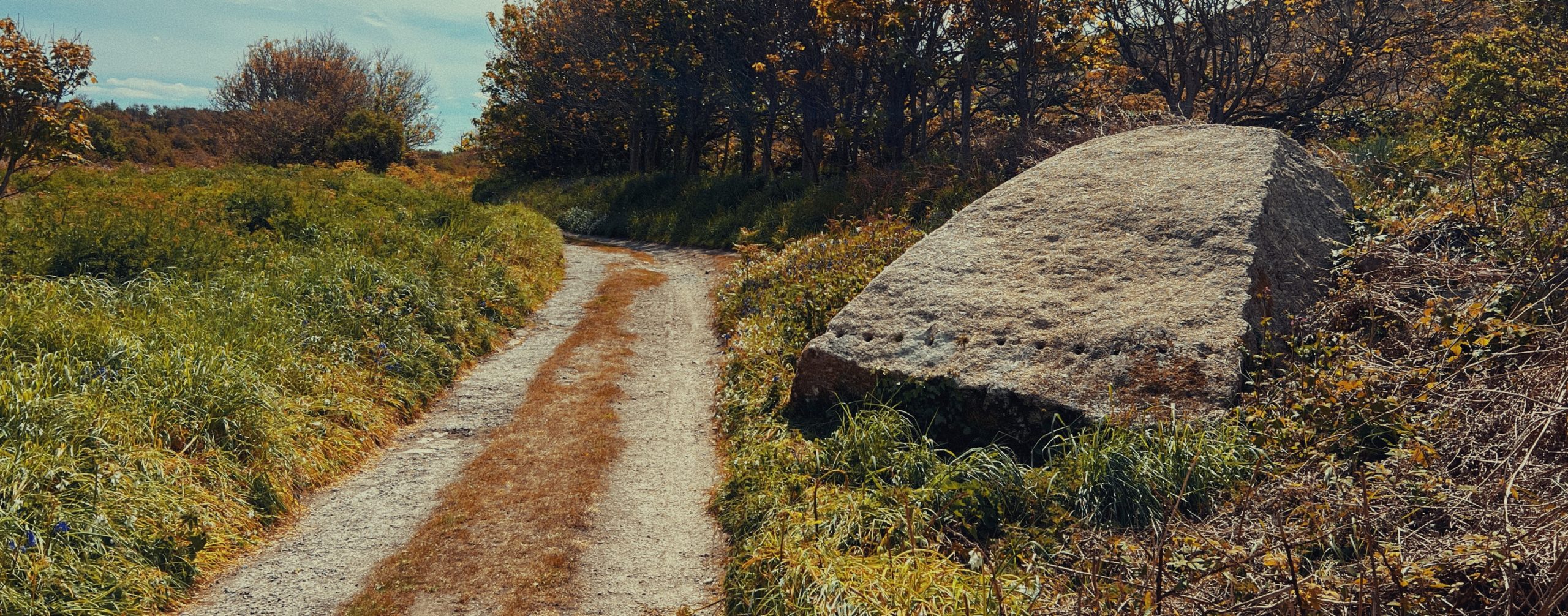
Comments
3 responses to “Rock art discovery at Nanjulian, St Just, Cornwall”
How interesting, Tom. Amazing to read how you spotted the marks and were able to use tech to identify and verify them.
Excellent work. Thank you. I have no doubt there is a LOT of rock art to be rediscovered, not only in Cornwall, but elsewhere. It clearly means something, and likely is connected with our ancestors’ cosmology and/ or world view/ model. I have discussed this with my partner, Teri Paul..an archaeologist. ( She dug at Boden last year, btw). Has any evidence of pigments or any other material ever been found in/around any cup marks anywhere?
Thanks Steve. I’m sure that there is a lot more to rediscover especially if we actively look for it through surveys.
I’m not sure about cosmology but I am sure that, having inspected at least these cup marks at a very high level of magnification, there’s no traces of pigments. I’m not aware of this being different anywhere else, even on protected carvings such as in chambered tombs.
Cup marks take a long time to make and possibly are added to over a period of time rather than executed as one ‘design’. It will always be fascinating to speculate and theorise over their meaning!